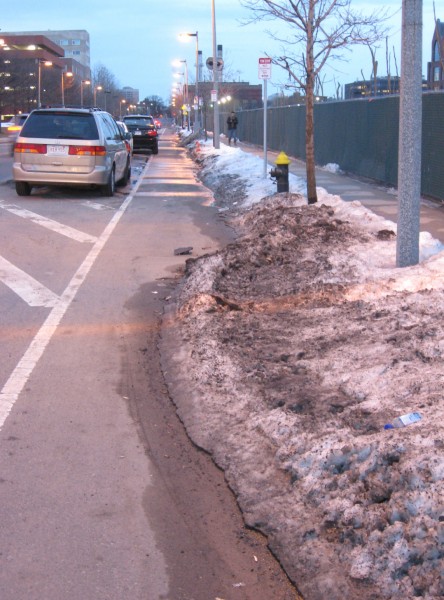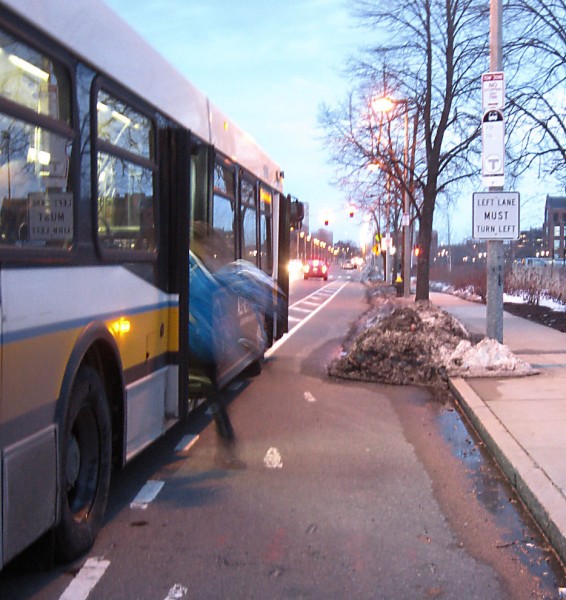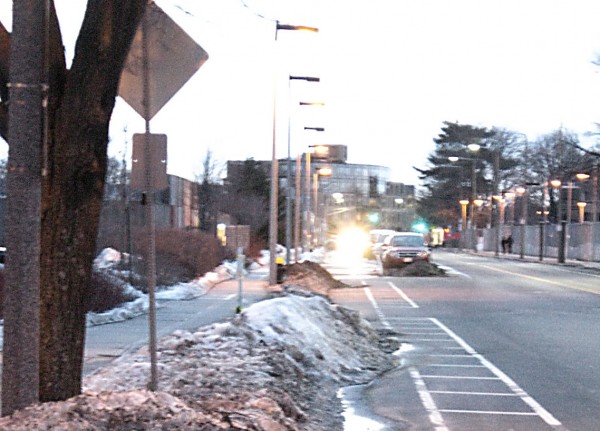This is a supporting document for my blog post about the Western Avenue cycle track in the Allston section of Boston.
I took the photos on this page around 5:30 PM on Sunday, February 23, 2014. There had been heavy snows earlier in the winter, but average daytime temperatures had been above freezing for 9 of the previous 10 days, and there had been rain on Thursday and Friday.
The cycle track is in the least favorable location for drainage on a crowned street, adjacent to the curb. Snowbanks intrude into the cycle track, but also, snow which had been plowed to the left of the cycle track is melting across it, and will freeze into black ice when the temperature falls.
Plowed snow encroaches into a bus stop, preventing the bus from pulling to the curb, encouraging cyclists to overtake on the right but also blocking them from doing it. A passenger is descending from the bus.
Looking back from the bus stop, a pile of snow is seen ahead of the first parked car and melting across the cycle track.
I took these photos near the end of the winter’s snow time. Long-time Boston bicycling advocate Jessica Mink, who commutes by bicycle through this area, reports that the cycle track was unusable for several weeks.
These problems illustrate a difference between bicycling advocacy which works to make bicycling a practical and reliable transportation choice, and bicycling advocacy which emphasizes bicycle sales and mode share. The former works to make bicycling practical even on days when conditions are difficult; the latter, to increase the popularity of bicycling at the times when it is easiest.




